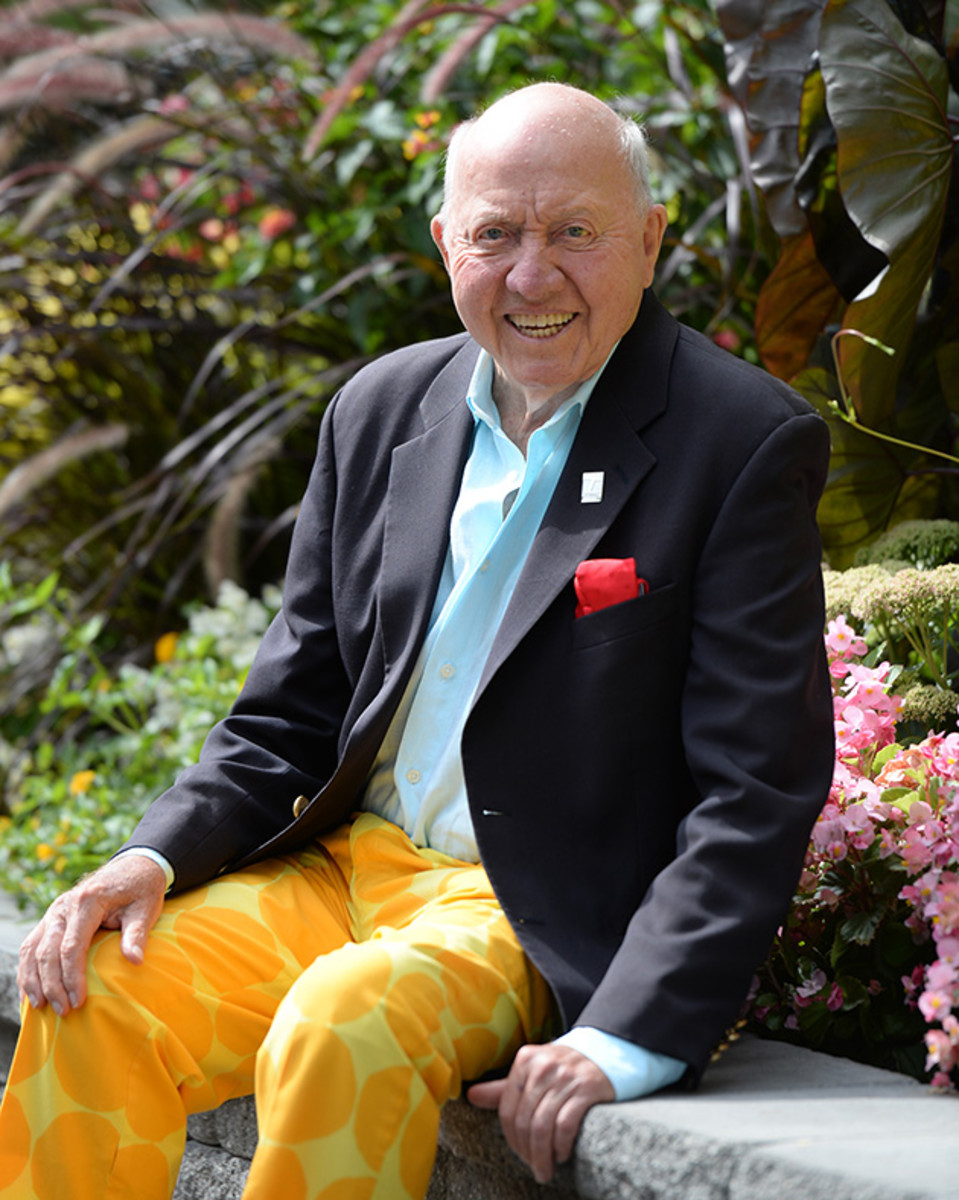A tribute to Bud Collins: Veteran tennis journalist honored at U.S. Open

NEW YORK – Let’s start with the pants. Those loud—yes, objectively hideous—crazy-quilts that became as much the wearer’s calling card as his incisive, insightful tennis commentary and writing.
They were conversation starters but they were so much more than two-legged novelty acts. Like the owner, they were fun and quirky and generous in spirit. They both conveyed a point that tennis was divertissement; and that it was playful, not pretentious. Plus, each pair told a story. And no one could spin yarns like Arthur Worth Collins—Bud, as he was presciently nicknamed as a boy.
They say dress for the job you want, not the job you have. But for this guy, those two were one and the same. Bud covered everything and everyone, from Muhammad Ali and Ted Williams to the Vietnam War. And, yes, he has an inventory of stories for each assignment.
But his real passion resided with tennis—he was once a national champ—and that’s where he ultimately settled. He covered the sport like no one before or since. Funny but smart. Sometimes earnestly, other times lightheartedly. He embraced the sport’s history—and famously wrote an entire tennis encyclopedia. But he was also progressive, rooted in the present and future.
Bud also is credited with being the first sportswriter to make the transition—seamlessly—to television. By decades, Bud prefigured everyone from Tony Kornheiser to Stephen A. Smith. Those of us scribes who make a few extra shekels working in television, should be tithing to Bud.
Even as a TV star—and make no mistake, at the height of the tennis boom, he was a star—Bud never stopped writing. He said it himself: he was never more comfortable than he was in the press room, staring at a blank sheet of paper and later a blank screen. Invariably he’d work his magic, and come up with a dispatch or a profile as well reported as it was well written, his prose as colorful as his trousers.

And even as star, he was hospitable and collegial to all, no matter how (un)accomplished. I told this story the other day, but everyone in this sport has their own version and variation:
One of the very first tennis events I ever covered for Sports Illustrated: Manhattan Beach, 1998. Nervously, I walk into the press room—a tent, really—for about 30 seconds before Bud comes up and introduces himself. I feel like the new kid at school who gets taken by the hand by the senior quarterback. Bud Collins is introducing himself to me? When the night session starts, I go up to my seat in the media section, which is way the hell up a set of bleachers. I am sitting with the media folks but also all the other tournament staffers who are off duty. Guys to my left are maintenance workers and grounds crew types who are rowdy and happy to be at a sporting event but clearly novice fans. Lindsay Davenport wins the first night match. Before the next match, Bud is on the court either presenting or receiving some award. He walks out with his crazy pants. One maintenance guy pokes his friend and, in heavily accented English, says, “Look! There’s the guy from the other night who taught us how to keep score!”
Sunday, the USTA christened the media center at the National Tennis Center in Bud’s honor. In-fighting and petty land-grabs are to tennis what heartbreak is to country music: a central theme. Tennis is, to quote Bud Collins the sport that insists on shooting itself in the foot while cutting off its nose to spite its face. But this dedication? It was a rare tennis decision that was met with precisely zero objections.
It’s a nice and fitting honor. But we all know this truth: it just makes official what was always tacitly understood. It was Bud’s room. The rest of us were just fortunate to be in his presence, lucky to call him a colleague.
